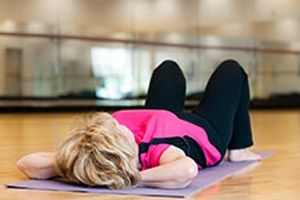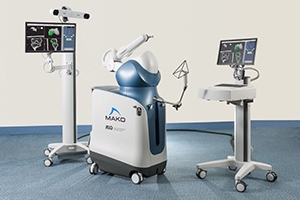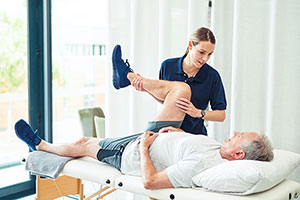Often, a hip injury or a degenerative joint condition of the hip will cause you to move the hip joint less. This will naturally result in weakening of the surrounding hip musculature. The problem with your hip may be rectified with surgery, but how do you keep your hip muscles strong enough to properly support the newly replaced or repaired hip joint? Here’s where prehabilitation plays a very important role.
Performing a series of exercises aimed at improving the strength of your hip muscles BEFORE you undergo hip surgery will greatly improve the chances of positive surgical outcome and a faster recovery.
To avoid straining your already-injured hip, most of these exercises can be done while lying in your bed on your back or in the sitting position:
- Buttocks squeeze: While lying on your back, contract the muscles of your buttocks (you should feel the muscles pressing against each other) hold for 5 seconds at a time and then relax.
- Thigh squeeze: While lying on your back, tighten your front thigh muscles (quads) while pressing the back of the knee into the bed. Hold the contraction for 5 seconds and then relax.
- Heel slides: While lying on your back, slide your heel slowly towards you buttocks by bending your hip and knee and then straighten your leg out again. Care should be taken to ensure your kneecap is always pointed to the ceiling.
- Leg slides: While lying on your back, slide your leg to the side while keeping the kneecap pointed the ceiling. The movement should be performed in a slow, controlled manner.
- Armchair push-ups: From a seated position, place your hands on the armrest and straighten your arms to lift your bottom off the chair using your legs and arms to support your bodyweight. Hold the position for about 5 seconds and sit down. In addition to strengthening the hip muscles, this exercise will strengthen the muscles of your arms, so you can use crutches with less effort if necessary after the surgery.
Try to perform 10-20 repetitions of these exercises once or twice very day prior to your hip surgery. Avoid straining yourself and if any exercise causes pain, you should discontinue it immediately.
After surgery, you may need to perform certain activities of daily living differently such as getting in and out of bed or bathtub, getting on and off a chair or a toilet seat, and dressing yourself. You may also need to use assistive devices. Following your surgeon’s instructions regarding these activities will help you stay safe during your recovery.
For more information on prehabilitation exercises that can specifically benefit you, contact your doctor or an orthopedic surgeon.




